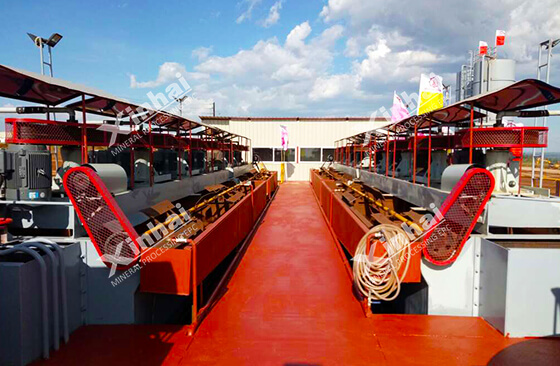If you want to know more information (such as product/process price, etc.), please contact us 24-hour telephone
Nickel is one of those unsung heroes of the modern world—a metal that quietly powers industries with its remarkable strength, resistance to corrosion, and unique magnetic traits. From the stainless steel in your kitchen to the batteries driving electric vehicles, nickel's fingerprints are everywhere. As a company rooted in mineral processing equipment and EPCM+O services (that’s engineering, procurement, construction management, and operations, for the uninitiated), we've seen firsthand how this metal's journey from the earth to the factory floor shapes industries and innovations. Here's a closer look at how nickel is extracted, processed, and put to work—told in a way that cuts through the jargon and gets to the heart of it.
Nickel doesn't just pop out of the ground ready to use. It's locked away in two main types of ores—sulfide and laterite—and each tells a different story. Sulfide ores, buried deep in ancient volcanic rock, pack a higher punch of nickel and often come with bonuses like copper and cobalt. They're the go-to for traditional smelting methods, which we'll get into later. Laterite ores, on the other hand, are more of a surface affair, formed over time as weather breaks down ultramafic rocks. They're more common—think vast deposits in places like Indonesia and the Philippines—but the nickel content is lower, and pulling it out takes a lot more effort. Australia and Russia round out the big players in the nickel deposit game.
How you get nickel out of the ground depends on where it's hiding. For laterites sitting close to the surface, open-pit mining is the name of the game. Picture massive machines stripping away the topsoil and scooping up the ore—it's efficient and cheaper, but it leaves a mark on the landscape. Deeper sulfide deposits call for underground mining, where crews tunnel down through shafts and drifts to haul the ore up. It’s trickier, pricier, and demands serious know-how, but it keeps the surface largely untouched. Either way, the environmental stakes are high—water use, land disruption, and carbon emissions are always on the radar, pushing the industry to rethink how it operates.

Once the ore's out, the real work begins—separating the nickel from everything else it's mixed with. For sulfide ores, it starts with froth flotation, a process that's equal parts science and art. The ore gets crushed, mixed with water and chemicals, and churned until a frothy layer floats up, carrying the nickel-rich bits. From there, it's smelted into a rough "matte" then blasted with heat again to burn off sulfur, leaving behind what’s called blister nickel. A final polish through electrorefining—using electricity to purify it—delivers the high-grade stuff industries crave.
Laterite ores take a different path. High-pressure acid leaching (HPAL) is a common trick here, where sulfuric acid and intense heat break the ore down to release nickel and cobalt. There's also the Caron process, which uses natural gas to reduce the ore into something nickel-rich, or pyrometallurgical methods that echo sulfide smelting but guzzle more energy thanks to all that iron in the mix. Each method has its trade-offs—cost, efficiency, and environmental footprint all weigh in.
After processing, nickel still needs a final cleanup to hit the purity levels industries demand. Hydrometallurgical refining uses acids or ammonia to dissolve the nickel, then pulls it apart from impurities with solvent extraction. Electrolytic refining takes a different tack-nickel gets dissolved in a bath and plated onto a cathode, emerging as shiny, pure slabs ready for action. It's meticulous work, but it’s what turns raw metal into a market-ready product.
Nickel's a workhorse across industries. About 60% of it ends up in stainless steel, giving it that rust-proof edge we all rely on. Lately, though, it’s been stealing the spotlight in batteries—think lithium-ion packs powering electric cars, with nickel-heavy cathodes like NCA and NMC leading the charge. Beyond that, nickel alloys like Inconel and Monel shine in tough spots—jet engines, ship hulls, chemical plants—thanks to their ability to handle heat and harsh conditions.
Nickel's a global player, mined in places like Russia and Indonesia, then shipped off to big consumers like China and the EU. Prices bounce around on the London Metal Exchange, nudged by supply hiccups, demand spikes, and the occasional geopolitical curveball. It's a market that never sits still.
Nickel's journey isn't without its downsides. Processing churns out waste—think tailings that need careful handling to avoid poisoning rivers or soil. The carbon footprint's another sore spot, though ideas like bioleaching (using bacteria to extract metal) are starting to lighten the load. Recycling’s a bright spot—scrap stainless steel and old batteries can feed a growing chunk of nickel demand, easing pressure on fresh mining.
The nickel world's evolving fast. New tech, like direct extraction processes or greener bioleaching, promises to shake things up, cutting costs and emissions. The electric vehicle boom is a huge driver—nickel’s starring role in batteries means more demand and more innovation. And with sustainability climbing the priority list, companies are leaning into cleaner methods and responsible sourcing to keep pace with tougher ESG standards.